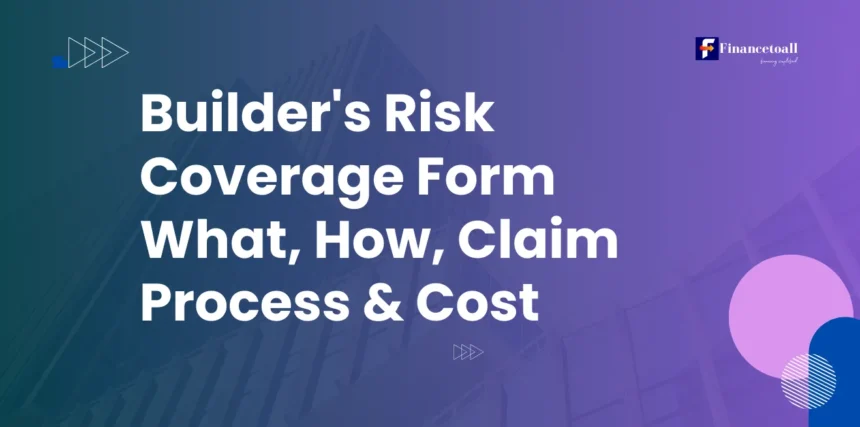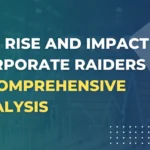The Builders Risk Coverage Form is a crucial policy for anyone involved in construction projects. Also known as Course of Construction Insurance, it provides protection for buildings and structures while they are under construction, safeguarding property owners, contractors, and developers from unexpected risks. Whether you’re in the construction industry or planning a project, having a clear understanding of Builder’s Risk Insurance can help you avoid costly setbacks.
Who Needs Builders Risk Insurance?
This insurance isn’t just for contractors—it benefits several stakeholders in a construction project. Property owners, general contractors, subcontractors, and developers all stand to gain from having a Builder’s Risk policy. In fact, many construction contracts require this insurance, and lenders often demand it before approving financing for a project.
Key Takeaways
What Does Builders Risk Insurance Cover?
Builders Risk insurance offers protection for more than just the building under construction. It typically covers:
- Structures Under Construction: The main property being built.
- Materials and Supplies: Items stored on-site, in transit, or temporarily located elsewhere.
- Temporary Structures: Things like scaffolding, which are crucial during the construction phase.
The policy also covers common perils such as fire, lightning, windstorms, theft, vandalism, and equipment malfunction.
Exclusions in Builders Risk Insurance
However, Builders Risk insurance doesn’t cover everything. Common exclusions include:
- Earthquake and Flood Damage: These require separate policies or endorsements.
- Wear and Tear: Normal aging or wear of materials isn’t covered.
- Mechanical Breakdown: Equipment failures aren’t included without additional coverage.
- Employee Theft: Losses caused by your workers won’t be covered.
- Design Errors and Faulty Workmanship: These issues often require specific endorsements to be included.
Knowing these exclusions will help you assess whether additional policies or endorsements are necessary for your project.
Duration of Builders Risk Coverage Form
Builder’s Risk insurance is temporary. It covers a project during the construction phase, but this coverage ends once the building is completed or occupied. The exact timeline can vary, so it’s important to review the policy terms carefully. Once construction wraps up, you’ll need to transition to a permanent property insurance policy.
How Builder’s Risk Differs from Other Policies
Builders Risk Insurance is often confused with other types of policies, but it serves a very specific purpose.
- General Liability Insurance: This covers injuries or damages caused by the contractor’s work, but not the property itself.
- Property Insurance: This policy protects completed, occupied buildings, while Builder’s Risk only covers structures in progress.
Understanding these differences ensures you have the right coverage for each phase of your project.
Additional Endorsements and Extensions
Builders Risk policies can be customized to meet specific project needs. Endorsements and extensions add layers of protection. Some popular options include:
- Soft Costs Coverage: Covers legal fees, financing costs, and marketing expenses that may arise due to delays.
- Delay in Completion Coverage: Protects against financial losses if your project is delayed.
- Equipment Breakdown Coverage: Ensures you’re covered if construction equipment malfunctions or fails during testing.
These endorsements can be a lifesaver when unexpected issues arise, so it’s wise to discuss them with your insurance provider.
How Much Builders Risk Coverage Form Do You Need?
When determining how much coverage you need, focus on the project’s total completed value—not just the market value or the cost of the land. This means considering:
- Materials
- Labor Costs
- Overhead Expenses
An accurate calculation ensures you’re fully covered if something goes wrong, helping you avoid underinsurance issues.
Costs of Builders Risk Insurance
The cost of Builder’s Risk insurance can vary widely depending on several factors, including:
- Project Size and Value: Larger, more expensive projects will naturally have higher premiums.
- Construction Type: Frame buildings tend to cost more to insure than masonry buildings, due to higher fire risk.
- Location: Projects in areas prone to natural disasters like floods or earthquakes will face higher premiums.
- Project Duration: The longer the construction period, the more you’ll likely pay for coverage.
By understanding these factors, you can better estimate your insurance costs and ensure your project budget accounts for it.
The Claims Process
Filing a claim under Builder’s Risk insurance is relatively straightforward, but it requires careful documentation. Here are the key steps:
- Report the Incident: Notify your insurer as soon as possible after a loss.
- Provide Documentation: Include photos of the damage, receipts for materials, and project reports.
- Work with Adjusters: Be ready to collaborate with insurance adjusters to assess the damage.
Be aware of potential challenges, such as disputes over coverage or the value of losses, and make sure to keep thorough records throughout the project.
Legal and Regulatory Considerations
Builders Risk Insurance policies vary by state, and regulations can differ from project to project. Some states have specific requirements for what must be included in a policy, so be sure to understand the legal framework where your project is located. Additionally, contracts with stakeholders or lenders may dictate certain insurance requirements, making it vital to review all agreements before purchasing coverage.
Conclusion and Best Practices
Builders Risk Insurance is an indispensable tool for protecting your construction projects from unexpected risks. By understanding its coverage, exclusions, and costs, you can make informed decisions that safeguard your investment.
To ensure you get the right coverage, it’s best to work with an experienced insurance broker who specializes in construction projects. Review your project timeline and potential risks carefully, and don’t hesitate to customize your policy with endorsements that suit your needs.
Frequently Asked Questions
Q.1 What is Builder’s Risk Coverage?
Builder’s Risk Coverage is a specialized insurance policy that protects buildings under construction. It covers damages to the property, materials, and equipment during the building phase.
Q.2 Who needs Builder’s Risk Coverage?
Contractors, builders, and property owners involved in construction projects should obtain Builder’s Risk Coverage. It safeguards their investment from unforeseen events like fire, theft, or vandalism.
Q.3 What does Builder’s Risk Coverage typically include?
Coverage usually includes protection against damage from fire, wind, theft, and vandalism. It may also cover materials and equipment on-site, depending on the specific policy terms.
Q.4 How long does Builder’s Risk Coverage last?
Builder’s Risk Coverage typically lasts for the duration of the construction project. However, it can be extended if necessary, depending on the policy provider.
Q.5 How do I obtain a Builder’s Risk Coverage form?
You can obtain a Builder’s Risk Coverage form through insurance agents or brokers specializing in construction insurance. Many insurers also provide online applications for convenience.
Q.6 Is Builder’s Risk Coverage mandatory?
While not legally required, Builder’s Risk Coverage is highly recommended for anyone involved in construction projects. It minimizes financial risks associated with potential damages.
Q.7 Can I customize my Builder’s Risk Coverage?
Yes, many insurers allow customization of policies to fit specific project needs. This flexibility ensures you have adequate protection tailored to your unique circumstances.








